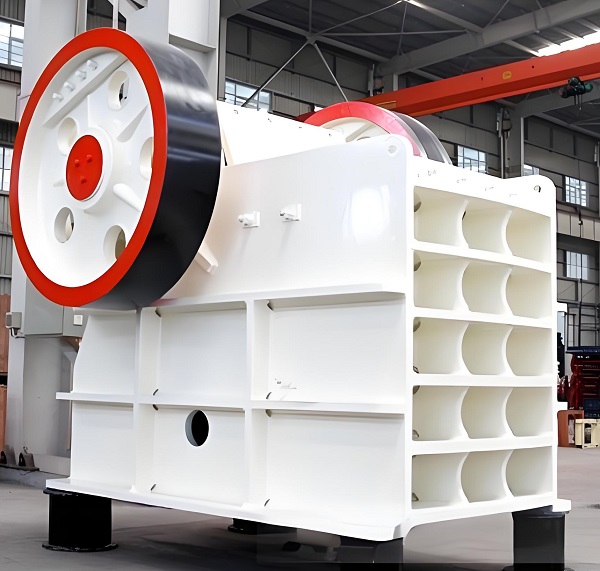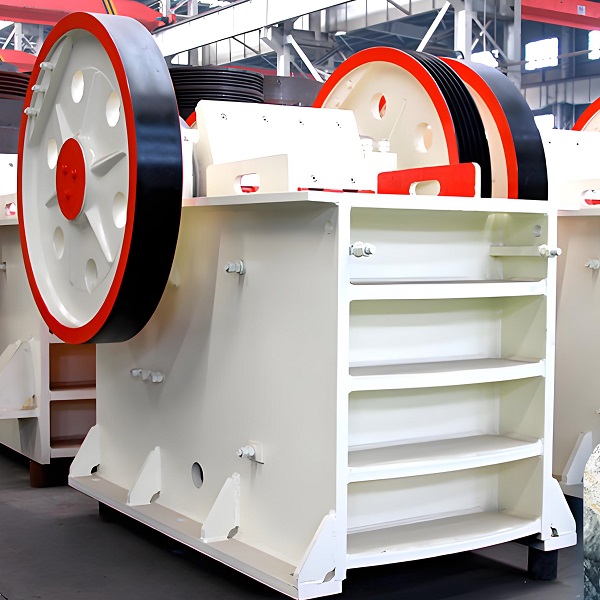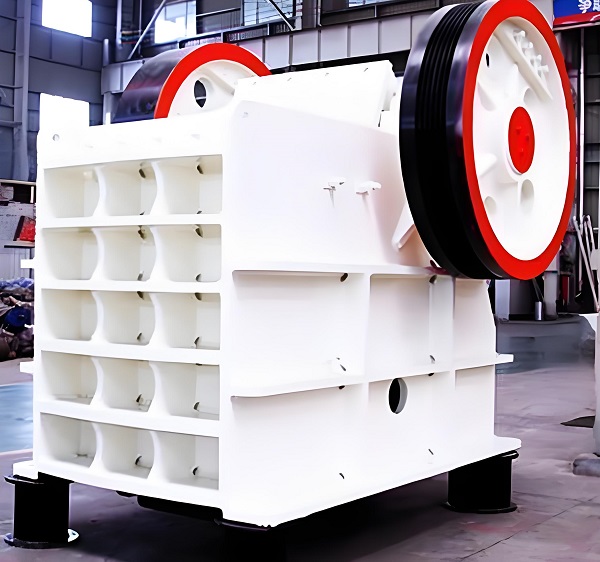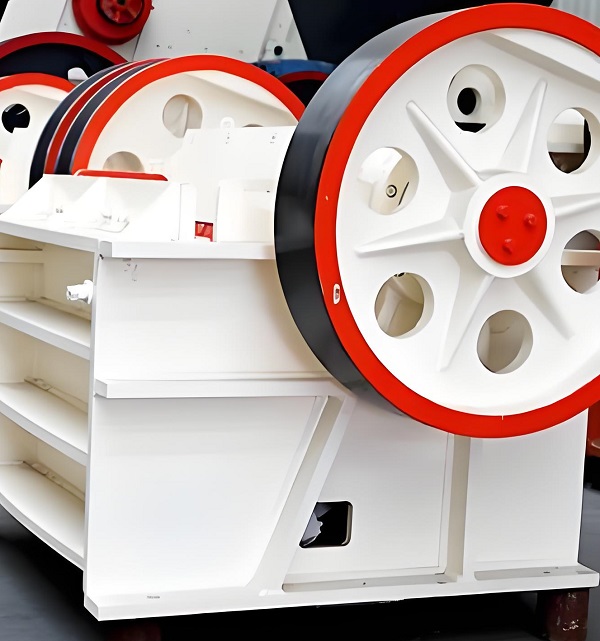Preface: In the fields of mining, building materials processing and various industrial raw materials processing, jaw crusher plays an extremely important role. As the core equipment, it undertakes the task of primary crushing of materials. With its powerful crushing ability, it can efficiently convert large pieces of materials into particle sizes that meet the needs of subsequent production, laying a solid foundation for the entire processing process. However, due to long-term high-intensity and high-load operation, the equipment will inevitably have various faults. These faults will not only seriously affect production efficiency, but also greatly increase the operating costs of the enterprise. Therefore, for relevant practitioners, mastering the maintenance skills of jaw crusher is the key to ensuring production continuity and improving economic benefits. This article will comprehensively and in-depth explain the maintenance points of jaw crusher, and provide a professional guide with great practical value for the majority of practitioners.

Jaw Crusher
A. Comprehensive preparation before jaw crusher maintenance
1. Accurate preparation of tools and materials
To repair the jaw crusher, a series of professional tools need to be prepared to meet the specific needs of different maintenance links. Wrenches are used to remove and tighten various bolts. Wrenches of different specifications can be adapted to bolts of different sizes to ensure the accuracy of the operation; screwdrivers can handle the installation and adjustment of some fine parts, such as fixing screws of electrical components; hammers can assist in the disassembly and assembly of parts, and through moderate knocking, the parts can be smoothly placed or separated; jacks can provide stable support during equipment maintenance, making it convenient for maintenance personnel to operate the bottom or internal parts of the equipment; cranes are used to lift large parts, such as movable jaws, eccentric shafts, etc. These parts are large in size and heavy in weight, and must be handled and installed safely and efficiently with the help of cranes. It is imperative to ensure that the specifications of these tools are accurately matched with the maintenance requirements and that the quality is reliable. Only in this way can the maintenance work be smoothly carried out.
At the same time, according to the specific model of the equipment and the past common fault records, the corresponding maintenance materials should be carefully prepared. Bearings are key components for equipment operation. Their quality directly affects the stability of the equipment. High-quality bearings can ensure smooth operation of the equipment and reduce vibration and noise. Seals are used to prevent lubricating oil leakage and dust intrusion. Good sealing performance can extend the service life of the equipment and ensure the cleanliness of the inside of the equipment. The jaw plate is in direct contact with the material and wears faster during high-intensity crushing operations. It needs to be replaced regularly. Jaw plates with good wear resistance can effectively improve crushing efficiency. Liners can protect key parts of the crusher, such as the inner wall of the crushing chamber, and extend the service life of the equipment. Bolts are used to connect various components. Their strength and specifications must meet the requirements, otherwise the components may loosen and affect the safe operation of the equipment. The quality of these materials directly determines the performance of the equipment after maintenance. Therefore, it is necessary to choose high-quality products produced by regular manufacturers to control the quality of maintenance from the source.
2. In-depth review of technical information
Before carrying out maintenance work, it is essential to fully review the technical information such as the instruction manual and maintenance manual of the jaw crusher. These materials record in detail the internal structure, working principle, operating specifications, and diagnosis and treatment methods of common faults of the equipment. By in-depth study of these materials, maintenance personnel can have a more thorough understanding of the operating mechanism of the equipment. When faced with a fault, the root cause of the fault can be quickly and accurately determined, and a scientific and reasonable maintenance plan can be developed. For example, by consulting the maintenance manual, the specific fault cause and solution corresponding to a certain model of jaw crusher under a specific fault code can be understood, so as to quickly solve the problem and reduce equipment downtime. In addition, consulting relevant industry standards and specifications can ensure that the maintenance work meets the industry's common requirements and avoid safety hazards or equipment performance degradation caused by improper maintenance.

Jaw Crusher
3. Strict implementation of safety measures
Safety is the primary prerequisite for maintenance work, and any negligence may cause serious safety accidents. First of all, the power supply of the equipment must be completely cut off, and a warning sign of "Do not close the switch, someone is working" must be prominently hung at the power switch to fundamentally prevent electric shock accidents caused by misoperation. Maintenance personnel must wear safety helmets to prevent accidental impacts on the head. The solid shell of the safety helmet can effectively disperse the impact force and protect the head. Protective gloves can effectively protect the hands from scratches and burns. When contacting sharp parts or high-temperature parts, gloves can play a good protective role. Goggles can prevent foreign objects from splashing and causing damage to the eyes during maintenance, ensuring the safety of maintenance personnel's vision.
For the disassembly and installation of some large components, such as movable jaws and eccentric shafts, due to their heavy weight and high difficulty in operation, professionally inspected lifting equipment must be used and operated by personnel with rich experience and professional qualifications. During the operation, the operating procedures must be strictly followed, and the lifting weight, lifting angle, lifting route, etc. of the lifting equipment must be accurately calculated and planned to ensure the safety of the operation process. At the same time, set up obvious warning signs on site to prohibit unrelated personnel from entering the operation area to prevent accidents.
B. Fine debugging and continuous maintenance after maintenance
1. Rigorous debugging
No-load trial run: After the maintenance work is completed, the first thing to do is to conduct a no-load trial run. Before starting the equipment, it is necessary to conduct a comprehensive and detailed inspection of all parts of the equipment to ensure that all parts are firmly installed without looseness; the transmission parts rotate flexibly without jamming; the lubrication system works normally and all lubrication points are fully lubricated. After starting the equipment, closely observe the operation of the equipment, listen carefully to whether the equipment has abnormal noise, and check whether the equipment has abnormal vibration and other phenomena. The no-load trial run time is generally controlled between 30 minutes and 1 hour. During the trial run, professional monitoring equipment should be used to monitor the various parameters of the equipment in real time, such as current, voltage, speed, etc., to ensure that the equipment operates normally. Once an abnormality is found, the machine should be stopped immediately for inspection, the problem should be found and solved in time to avoid more serious failures in subsequent load trials.
Load trial run: After the no-load trial run is normal, a load trial run is carried out. During the load trial run, the feed rate should be gradually increased so that the equipment gradually reaches the rated load. Avoid sudden loading that causes the equipment to be subjected to excessive pressure instantly and damage parts. Observe the situation of the equipment when it is running under load, check whether the product particle size meets the requirements, whether the output meets the design indicators, and whether the equipment has abnormal vibration, heat generation, etc. The load test run time is generally 4 to 8 hours. During the test run, the equipment should be fully inspected, including the crushing effect of the material, the working status of each component of the equipment, etc. If problems are found, they should be dealt with in time. If the product particle size does not meet the requirements, the discharge port can be adjusted again; if the equipment vibrates abnormally or heats up, it should be stopped immediately to investigate the cause to ensure that the equipment is in the best operating state before it is officially put into production.

Jaw Crusher
2. Daily maintenance
Regular inspection: Establish a regular inspection system and conduct a regular comprehensive inspection of the jaw crusher. The inspection content includes whether the appearance of the equipment is damaged, whether the connection of each component is firm, the wear of the transmission components, the working condition of the lubrication system, etc. The time interval for regular inspections is determined according to the use of the equipment and the working environment, generally once a week or once a month. For equipment that is frequently used and has a harsh working environment, the inspection cycle should be appropriately shortened. Through regular inspections, potential problems of the equipment can be discovered in time, measures can be taken in advance to repair them, avoid the expansion of faults, and reduce the failure rate of the equipment.
Lubrication and maintenance: According to the lubrication requirements of the equipment, lubrication and maintenance of each lubrication point should be performed regularly. Lubrication is a key link to ensure the normal operation of equipment. Good lubrication can reduce friction between parts, reduce wear and extend the service life of equipment. Replace grease in time to ensure that the quality and quantity of grease meet the requirements. At the same time, pay attention to the storage and preservation of grease to avoid contamination of grease. When storing grease, place it in a dry and clean environment to avoid direct sunlight and high temperature. Use the correct lubrication method, such as using a special oiler and following the prescribed oiling sequence, to ensure that all lubrication points can be fully lubricated.
Cleaning and maintenance: Clean and maintain the equipment regularly, remove dust, oil and other debris on the surface of the equipment, and keep the equipment clean and hygienic. Dust and oil on the surface of the equipment will not only affect the appearance of the equipment, but may also corrode the surface of the equipment and reduce the service life of the equipment. At the same time, clean the materials and debris inside the equipment to prevent materials from accumulating inside the equipment and affecting the normal operation of the equipment. Material accumulation may cause equipment blockage, increased wear of parts and other problems. Use professional cleaning tools and cleaning agents, such as brushes, rags, cleaning agents, etc., to thoroughly clean the equipment. During the cleaning process, pay attention to protecting sensitive parts of the equipment to avoid damage caused by improper cleaning.

Jaw crusher
Replacement of wearing parts: Replace wearing parts such as jaw plates, liners, bearings, etc. in time according to the use of the equipment and the degree of wear of the wearing parts. Wear of wearing parts is inevitable, but timely replacement can ensure the performance and production efficiency of the equipment. When replacing wearing parts, choose products with reliable quality and ensure correct installation. Choose wearing parts produced by regular manufacturers, and their quality and performance are more guaranteed. During the installation process, strictly follow the installation requirements to ensure that the wearing parts are installed firmly and accurately. At the same time, analyze the replaced wearing parts to find out the cause of wear, so as to take corresponding improvement measures in subsequent use to extend the service life of the wearing parts.
PS: The maintenance of jaw crushers is a systematic and complex task, which requires maintenance personnel to have solid professional knowledge, rich practical experience and rigorous work attitude. By doing a good job of preparation before maintenance, accurately judging the causes of common faults and taking effective maintenance methods, and paying attention to the commissioning and maintenance work after maintenance, it can ensure the normal operation of the jaw crusher, improve the service life and production efficiency of the equipment, and provide strong guarantee for the development of the enterprise. During the actual maintenance process, maintenance personnel should also constantly sum up their experience and explore new maintenance technologies and methods to better deal with various equipment failures and adapt to the ever-changing production needs.
Save Time! Get A Detailed Quotation Quickly.
